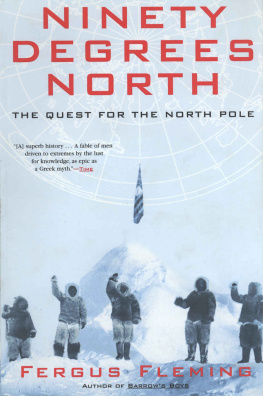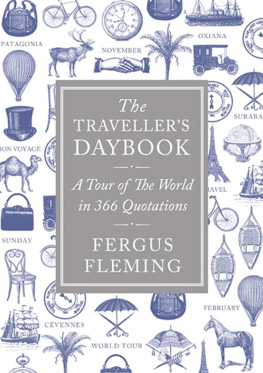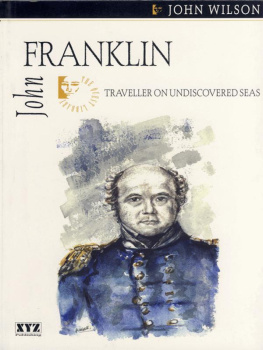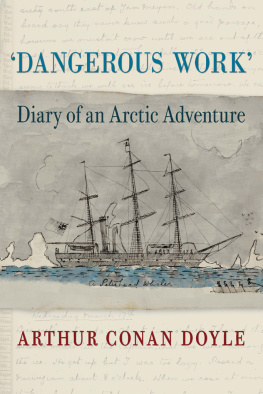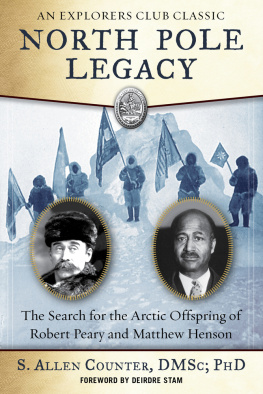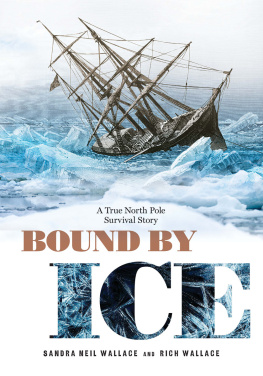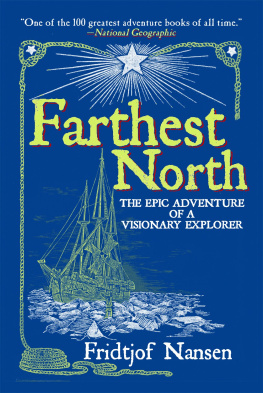NINETY DEGREES NORTH
Also by Fergus Fleming
Barrows Boys
Killing Dragons The Conquest of the Alps
NINETY DEGREES NORTH
The Quest for the North Pole
Fergus Fleming

Copyright 2001 by Fergus Fleming
All rights reserved. No part of this book may be reproduced in any form or by any electronic or mechanical means, including information storage and retrieval systems, without permission in writing from the publisher, except by a reviewer, who may quote brief passages in a review. Any members of educational institutions wishing to photocopy part or all of the work for classroom use, or publishers who would like to obtain permission to include the work in an anthology, should send their inquiries to Grove/Atlantic, Inc., 841 Broadway, New York, NY 10003.
First published in Great Britain in 2001 by Granta Books, London, England
Published simultaneously in Canada
Printed in the United States of America
FIRST GROVE PRESS PAPERBACK EDITION
Library of Congress Cataloging-in-Publication Data
Fleming, Fergus, 1959
Ninety degrees North : the quest for the North Pole / Fergus Fleming.
p. cm.
First published in Great Britain by Granta Books 2001T.p. verso
Includes bibliographical references (p.)
ebook ISBN-13: 978-0-8021-9753-5
1. North PoleDiscovery and exploration. 2. Arctic regionsDiscovery and exploration. I. Title: 90 degrees North. II. Title.
G620.F58 2002
919.804dc21
2002021469
Grove Press
841 Broadway
New York, NY 10003
God gave man dominion over all the earth and made no exception of the North Pole.
Sir John Barrow, 1846
But what is the Pole? A point without magnitude, one extremity of the axis on which the terrestrial sphere revolves, without length, breadth or thickness.
Blackwoods Magazine, 1875
Is it the struggle towards the goals which makes mankind happy? What is the value of having goals for their own sake? they all vanish It is merely a question of time.
Fridtjof Nansen, c. 1900
The Pole at last!!! The prize of 3 centuries, my dream and ambition for 23 years. Mine at last.
Robert Edwin Peary, 1909
CONTENTS

PREFACE AND ACKNOWLEDGEMENTS

Seven years ago, I decided to write a two-volume history of the Arctic. Like many grand plans, mine fell apart almost immediately. The first volume became Barrows Boys, a history of British exploration in the first half of the nineteenth century which encompassed not only the Arctic but the Antarctic, Australia and West Africa. The second became the book you are now holding. Both books stand on their own, but they can still be read sequentially, for the exploits described in the first lead directly to those in the second. It was Sir John Barrow who promoted nineteenth-century interest in the Arctic; and it was the search for one of his boys, Sir John Franklin, who disappeared in the North-West Passage, that set later explorers on their quest for the North Pole. Indeed, so long was the shadow of Barrows programme that in 1927 Roald Amundsen, conqueror of both Poles, still cited Franklin as his inspiration.
As a narrative of North Pole exploration this is aimed at those who are new to the subject. Of necessity it includes episodes that will be recognisable to Arctic buffs. Tomes have been written about American explorers such as Kane, Hall, De Long, Greely and Peary; and books similar to this have been published in the past, the best and most comprehensive being Pierre Bertons The Arctic Grail of 1988. Alongside the familiar, however, there is much that I hope will be new. The Austro-Hungarian and Italian expeditions, for example, have been ignored by most historians; the story of Germanys expedition has hardly been told since its return in 1870; the Russian attempt of 191314 is all but unknown; and a book could be written about Britains 18756 expedition, the heroic failure of which was to be replicated in Antarctica by Captain Scott the minece grise in both cases being Sir Clements Markham (who, as it happens, was an admirer of Sir John Barrow). In addition, the story of the Pole ends habitually with its conquest in 1909 by Robert Peary or by his competitor Frederick Cook, if the fancy takes you but as most authorities now accept that both men falsified their findings, I have included Sedovs 1914 attempt, the Amundsen-Ellsworth flight of 1925, the Byrd flight of 1926 and the Amundsen- Ellsworth-Nobile expedition by airship of the same year, the last of which was indisputably the first to reach the spot.
The question of priority is a thorny one. Did Peary reach the Pole? There are scientists who have spent years on floating ice stations and who have seen conditions so smooth that Pearys exaggerated mileage may have been possible. Some Polar explorers, too, have been reluctant to dismiss his claim. In 1988 the National Geographic Society studied his photographs and produced evidence that he had reached the Pole. Other, less partisan, bodies in the US studied his readings and concluded that he had not. Did Cook do it? There are die-hards who insist that he did, despite overwhelming evidence that he was a fraud. Did Byrd do it? Once again the camps are split some saying he did, others saying he was a publicity-seeker who lied throughout and a third, more generous faction saying that although he did not do it he genuinely thought that he had. All one can say for certain is that Amundsen, Ellsworth and Nobile were the first to see the Pole; that the first to set foot on it were a twenty-four-strong team of Cold War scientists under Alexander Kuznetsov, who flew there in 1948 on the orders of Joseph Stalin; and that an expedition led by British explorer Wally Herbert became, in 1969, not only the first to reach the Pole by sledge but the first to traverse the Arctic pack an astonishing feat. By rights, Kuznetsov and Herbert should feature prominently in this book. That they do not is due solely to narrative constraints. As the Arctic historian Christopher Pala has pointed out, it was the dream of centuries to stand at the North Pole; but those who did the standing were not those who did the dreaming. This story is about a dream, and it stops in 1926.
Hitherto, the North Pole has been treated pictorially as a poor cousin of its southern counterpart. This is a shame, because every Arctic expedition had something unique to record, albeit in different ways: early explorers, like Kane and Hayes, took sketches and gave them to the best available painter with instructions to get on with it; later expeditions brought along at least one illustrator, sometimes also a photographer, and in later cases, simply a camera; some explorers, such as Julius Payer, were artists in their own right. Here, therefore, reproduced at Great Personal Expense (Joanna: I know you would be disappointed if I didnt say that) are a selection of their works, some of which have not been aired in more than a century.
In writing this narrative I have used, wherever possible, the original journals of those involved. Nevertheless I owe a debt to the groundwork of previous authors who have written extensively on individuals and/or expeditions which are here covered in mere chapters. I urge anybody who is interested in Arctic history to read them. To name but a few: Wally Herberts
Next page
